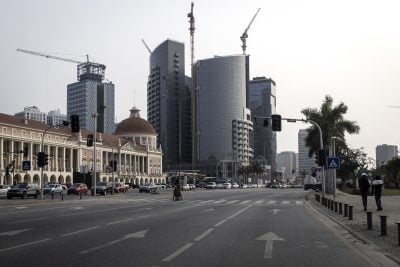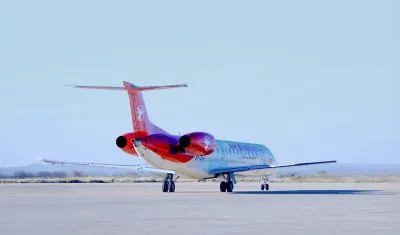East Africa
There are many differences among East Africa’s three top 10 countries – Rwanda, Tanzania, and Ethiopia – starting with population: Ethiopia has 88m people, compared to 10m in Rwanda. Beyond that, however, are many similarities. Each retail landscape is fragmented, with formal retail accounting for less than 1% of sales.
What makes this region attractive is its fast-evolving retail dynamics – rapid population growth, increasing urbanisation, macroeconomic stability and growth potential, and increasing foreign and regional investment in retail.
Further, the region (which also includes unranked Kenya and Uganda) has strong regulation and solid trade blocs (among Kenya, Uganda, Tanzania, Rwanda and Burundi), which makes importing easier and enhances supply chains. The region’s organised retail is dominated primarily by Kenyan chains Nakumatt and Uchumi.
A limited but growing number of global CPG companies have a presence in the region or are currently operating there, including Unilever, Nestlé, Diageo and Coca-Cola. These brands generally design products specific for consumers in the region.
Rwanda (1st). With one of Africa’s fastest-growing economies – annual GDP growth is more than 8% – Rwanda leads the ARDI rankings. Although small in land area (roughly the size of Albania) and just 20 years removed from the 1994 genocide, Rwanda has an efficient government and strong macroeconomic indicators that reveal many opportunities for international retailers that can offer basic packaged goods. French and English are both common here, but English has become the country’s formal first language.
Since the genocide, the government has made great leaps in moving the country forward, with a focus on reforming the business climate and economic environment, and seeking to attract foreign investment.
Specifically, infrastructure reforms have focused on developing an efficient transport and road network system and turning Rwanda into a regional logistics hub. Additionally, the market is lifted by people from neighbouring countries such as Uganda and the Democratic Republic of the Congo who travel to Rwanda to shop.
With a low income per capita, most consumers base their shopping decisions on price and affordability, and are reluctant to change brands. Fresh food purchases are typically made in informal markets, and dry and packaged foods are bought from kiosks, which tend to offer smaller products at lower prices.
Store convenience plays a strong role in Rwandan consumer purchasing decisions, as most say they prefer shopping at smaller stores closer to home, rather than hiking longer distances to modern retailers.
A handful of formal grocers operate in the country. Kenyan retailer Nakumatt operates two stores in the capital Kigali, selling a mix of local and imported products in different categories ranging from grocery and apparel to washing machines and cookers.
Transport in Rwanda is primarily by road and air. Less restrictive regulatory policies make regional cross-border road transportation easier, and roads are of relatively good quality, with most tarmacked. Rwanda’s good transport infrastructure is supporting the development of efficient supply chains that reach consumers in and around Kigali and in neighbouring cities within Western Uganda as well as Eastern Congo. A trade union with Kenya has made customs at the Kenyan border much more organised and limited any border issues. (See also Country Focus, Rwanda.)
Tanzania (4th). Tanzania’s vast scale (it is Africa’s 13th largest country by size) and its location on the Indian Ocean coast make it an attractive market for international retailers seeking a regional base.Swahili and English are the official languages in Tanzania.
As in other low-income African markets, consumers are focused on price and availability. Most purchases are made at small, family-owned shops called dukas. Supermarkets are becoming more popular, however, especially for higher-income Tanzanians and expatriates seeking variety and more sophisticated products. As this more privileged group becomes more prominent, more will make purchases based on quality and service rather than just price.
South African and Kenyan retailers such as Shoprite, Game (owned by Massmart), Woolworths, and Nakumatt are operating in Tanzania, marking the upper edge of a developing modern retail landscape that also includes independent formal retail stores.
In these stores, up to 80% of products are imported, mainly from Dubai, Kenya, and South Africa. Private-label products are not common yet, although local consumer goods brands such as Whitedent toothpaste are well established. A growing number of Tanzanian consumer goods companies are establishing local brands, such as Azam (juices, water, biscuits, and dairy), which also exports to other East African countries.
Most products shipped to Tanzania come through the Port of Dar es Salaam, which handles 95% of the country’s international sea trade. Interior transport is mainly by road – which is of limited quality – and supplemented by rail. This poor transport infrastructure has hindered the setup of efficient supply chains, particularly in remote locations.
Want to continue reading? Subscribe today.
You've read all your free articles for this month! Subscribe now to enjoy full access to our content.
Digital Monthly
£8.00 / month
Receive full unlimited access to our articles, opinions, podcasts and more.
Digital Yearly
£70.00 / year
Our best value offer - save £26 and gain access to all of our digital content for an entire year!

 Sign in with Google
Sign in with Google 


